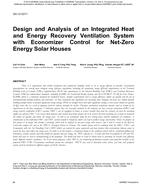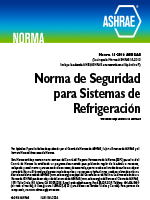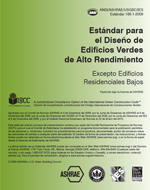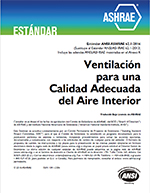Description
There is a requirement now within residential and commercial building sectors to be as energy efficient as possible. Governmentorganizations are issuing more stringent energy efficiency regulations, including the mandatory energy efficiency requirements in the NationalBuilding Code of Canada (NBC); supplementary SB-10 code requirements in the Ontario Building Code (OBC); and National ResourcesCanada (NRCan) administered standards, including R-2000, the EnerGuide Rating System, and the ENERGY STAR for New Homes.R-2000, which is a voluntary standard for residential houses, includes requirements such as energy efficiency, indoor air quality and the use ofenvironmentally friendly products and materials. As these standards and regulations are becoming more stringent, the focus has shifted towardsbuilding airtight homes to provide significant energy savings. While an airtight house does offer significant savings, it also causes indoor air quality(IAQ) issues due to a lack of adequate fresh-air delivery through the cracks. Therefore, mechanical ventilation becomes vital as evident by itsrequirement in all these standards. Ventilation systems that are currently available in the industry are heat recovery ventilation (HRV) andenergy recovery ventilation (ERV) systems. HRV’s can be equipped in homes to recover sensible heat from the exhaust air onto the incomingsupply air, whereas ERVs can recover both moisture and sensible heat from exhaust air to be used in the fresh incoming air in order to maintainthe indoor air quality and reduce the energy costs. As well as an economizer mode for free cooling when suitable conditions are conducive. Acombination of the individual HRV and ERV systems would be beneficial, which can lead to further energy conservation. Hence the purpose ofthis project is to design and develop a prototype which will be utilized in net-zero energy solar houses, and it will be tested in the RyersonUniversity campus lab and at the TRCA Archetype House in Toronto. The control system will be combined with the HRV, ERV, andEconomizer with the Air Handling Unit (AHU) which can control the zones separately and have features like recirculation between zones torecycle the heat and reduce the energy costs. In order to do this project, a conceptual design of the combined system will be established followed byschematics, controls systems and then finally the specifics like fan rating, the AHU capacity etc. A model will then be prepared in 2D and 3D,which will later be used in manufacturing of the prototype. The model will then be tested to obtain data to determine its benefits and efficiencyunder different weather conditions. An Excel based program, called TRVE, for conducting preliminary analysis and potential benefits of theproposed HRV/ERV/Economizer ventilation system was developed. TRVE was used to determine when, where, and how such proposedsystem could be beneficial in different regions of North America.
Citation: ASHRAE Trans., vol. 118, pt. 2, San Antonio, TX
Product Details
- Published:
- 2012
- Number of Pages:
- 8
- File Size:
- 1 file , 700 KB
- Product Code(s):
- D-SA-12-C011




